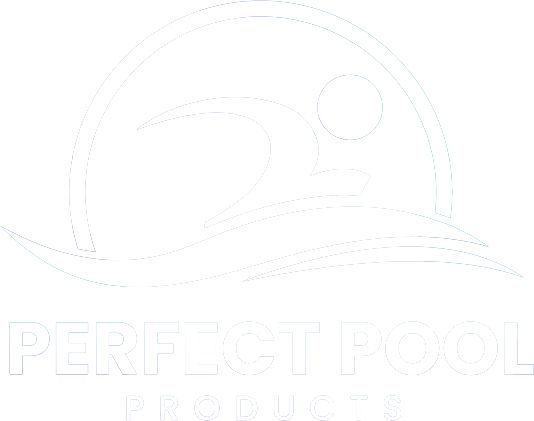Taking care of a pool can feel like a big job, right? We all love the sparkling water and relaxing swims, but keeping the pool clean and running well can sometimes be a challenge.
One of the most common problems pool owners face is when their filter system isn’t working properly. A dirty or broken filter can leave your pool water looking cloudy or even unsafe to swim in.
But here’s the good news, you don’t always need a professional to fix these issues. Some simple parts of your pool filter can be replaced or maintained all by yourself!
This DIY maintenance not only saves you time but also helps you keep more money in your pocket.
In this blog, we’ll talk about that. So let's get into it!
Why DIY Maintenance Is a Smart Choice
Taking care of your pool filter yourself is a smart way to save money and keep things running. Hiring a professional every time something goes wrong can add up, but with a little know-how, you can handle many small fixes on your own.
This means you’ll spend less on repairs and have more to enjoy your pool!
Another big benefit is convenience. You don’t have to wait for a repair technician to come by—you can fix minor issues whenever it suits you.
Plus, learning how your pool system works gives you more control. When you understand your filter’s parts and how they function, you can catch problems early before they become bigger (and more expensive) headaches.
Common Pool Filter Parts You Can Replace Yourself
1. O-Rings
O-Rings are small rubber seals that keep your pool filter system leak-free. They are used in various parts of the filter. For example, valves, tanks, and cartridges, etc. to ensure a tight seal and maintain proper pressure. Over time, O-Rings can crack or lose flexibility, causing leaks or reduced efficiency.

Replacement Tips
Replacing an O-Ring is simple. We also have a separate blog on O-Rings, you can read that too if you want. To replace, first, turn off the pool system and release any pressure.
Carefully remove the old O-Ring, clean the groove, and apply a silicone-based lubricant to the new one before installing it. Always ensure it sits snugly in place.
Below is a video on replacing O-Rings, so that you can do it easily. Also, you get high-quality O-Rings for your specific filter in our collection at Perfect Pool Products.
2. Filter Cartridges
Filter cartridges are the heart of the filtration system. They trap dirt, debris, and particles to keep your pool water clear. Over time, they can get clogged or damaged. So their efficiency is reduced. It can also cause strain on the system.
Replacement Tips:
Shut off the system and release pressure from the filter tank. Open the filter housing, remove the old cartridge, and rinse the housing thoroughly. Insert the new cartridge, ensuring it’s seated correctly, then close the housing and restart the system.

Regularly cleaning and replacing cartridges prolongs their lifespan and keeps the system efficient. Check out the video tutorial on replacing filter cartridges. Get our premium cartridges here.
3. Drain Plugs
Drain plugs are small yet essential components that allow you to drain water from the filter during maintenance or winterization. Over time, they may crack, wear out, or lose their seal, causing leaks.
Replacement Tips:
Turn off the filter system and drain any remaining water. Unscrew the old drain plug, clean the threads, and check for debris or damage in the area. Install the new plug securely and make sure it’s tightened just enough to prevent leaks without overtightening.
We have attached a step-by-step video for this below. And, browse our collection for durable options for Drain Plugs.
4. Pressure Gauges
Pressure gauges help monitor the filter's performance. They show if the pressure is too high or low. A malfunctioning gauge can make it hard to detect issues, leading to inefficient filtration or system damage.

Replacement Tips:
First, turn off the system and relieve pressure. Use a wrench to unscrew the old gauge, then clean the threads and apply Teflon tape to the new gauge for a tight fit. Screw it into place, ensuring it’s aligned properly, and restart the system to test.
For a detailed guide, check out our instructional video.
5. Backwash Valves
Backwash valves are essential for reversing water flow to clean sand or DE filters. Over time, they can wear out, causing leaks or difficulty in operation.
Replacement Tips:
Turn off the pump and release the system’s pressure. Remove the valve handle or screws, depending on the design, and take out the old valve.
Clean the area and install the new valve, ensuring all connections are secure. Follow the manufacturer’s instructions for proper alignment. You can also browse our collection for top-quality valves here.
How to Identify When a Part Needs Replacement
Pool filter parts don’t last forever, so you need to replace them to save yourself from bigger issues down the line. Here are some signs to watch out for:
-
Leaks: If you notice water dripping around the filter housing, valves, or connections, it’s often a sign of a worn-out O-Ring, drain plug, or cracked housing.
-
Reduced Water Flow: When water circulation slows, it could mean the filter cartridge is clogged or a valve isn’t functioning properly.
-
Pressure Changes: Keep an eye on the pressure gauge. If the reading is too high or low, it might indicate a faulty gauge or a blockage in the system.
Regular inspection is the key. During routine maintenance, check for visible cracks, wear, or buildup on parts.
Tools You’ll Need for DIY Maintenance
Having the right tools makes replacing pool filter parts quick and easy. Here’s what you’ll need:
-
Wrenches: A simple wrench or adjustable spanner helps loosen and tighten parts like pressure gauges and drain plugs.
-
Silicone Lubricant: This is essential for keeping O-Rings flexible and sealing tight. Never use petroleum-based lubricants as they can damage the rubber.
-
Gloves: Use rubber gloves to protect your hands from debris, sharp edges, or chemicals.
-
Teflon Tape: This helps seal threads on parts like pressure gauges to prevent leaks.
-
Cleaning Brushes: Small brushes are great for cleaning grooves and ensuring debris doesn’t interfere with new parts.
Create a basic maintenance kit by gathering these tools in one place. Having everything ready will save you time and make maintenance tasks smoother.

Mistakes to Avoid During DIY Maintenance
While DIY pool filter maintenance can save you time and money, mistakes can cause more harm than good.
Here’s what to watch out for:
-
Over-tightening Parts: It’s tempting to tighten everything as much as possible, but over-tightening can damage parts like O-Rings or pressure gauges. This can lead to leaks or cracks. Always tighten parts just enough to create a secure seal—use your hand or a wrench gently.
-
Using the Wrong Replacement Part: Each pool filter system is different, so using a part that doesn’t match can cause poor performance or even system failure. Before buying, double-check the part number and ensure it's designed for your specific pool filter brand.
-
Skipping Lubrication: O-Rings and other rubber parts need to stay flexible. Not lubricating them can cause them to crack or wear out faster. Always apply a small amount of silicone lubricant before reassembling parts, especially O-Rings.
To avoid these mistakes, take your time, follow the instructions carefully. If you're unsure, don’t hesitate to reach out for advice.
Conclusion
Remember, always check for leaks, low pressure, or reduced water flow to spot issues early. And make sure you have the right tools and replacement parts before you begin.
If you need any parts or have questions about DIY maintenance, feel free to explore our collection of pool filter products. We're here to help you keep your pool in top shape!
Explore our collection of pool filter parts here!
Like, share, and subscribe for more helpful pool care tips!
 Trusted By Pool Owners Nationwide
Trusted By Pool Owners Nationwide



